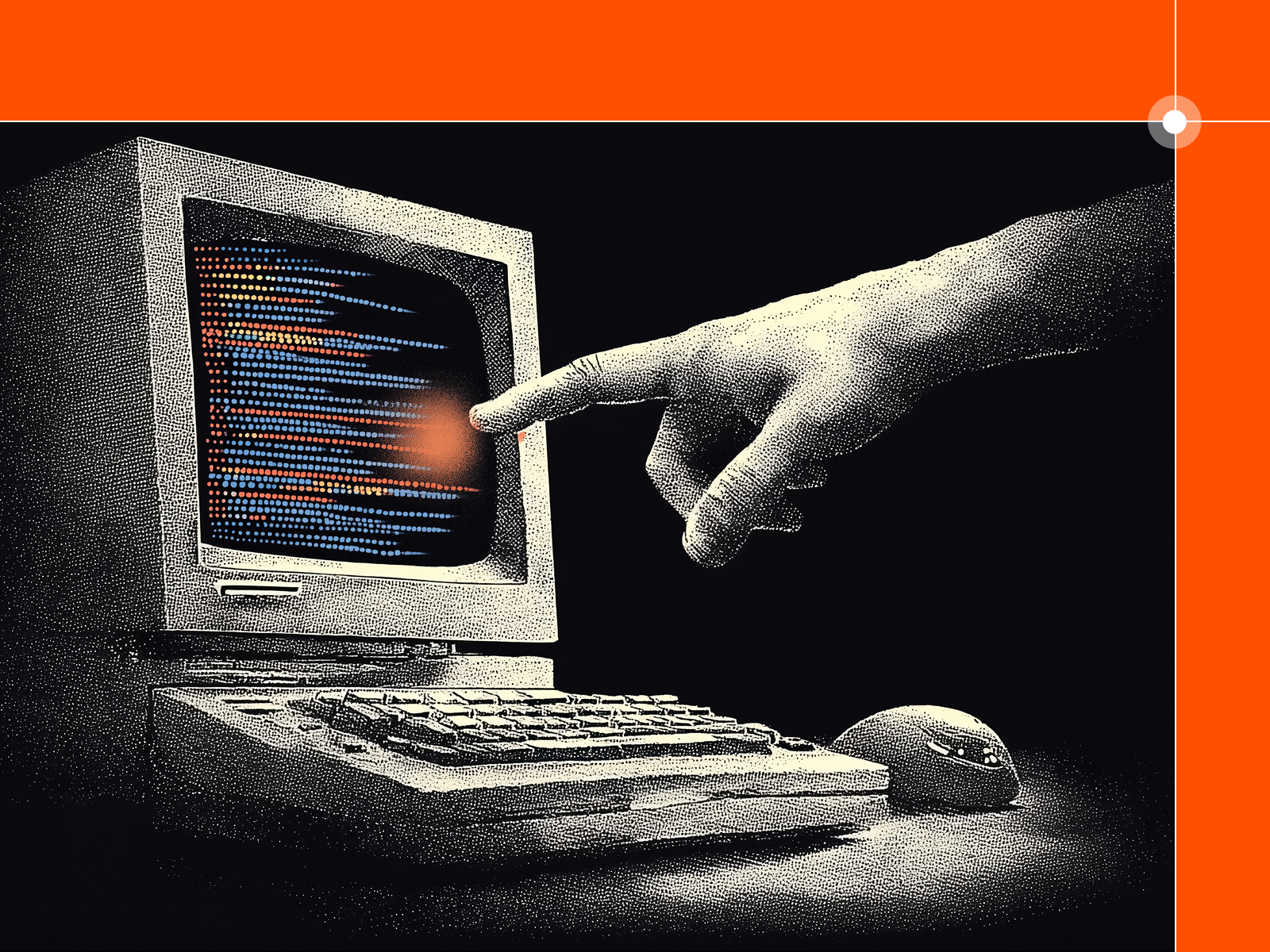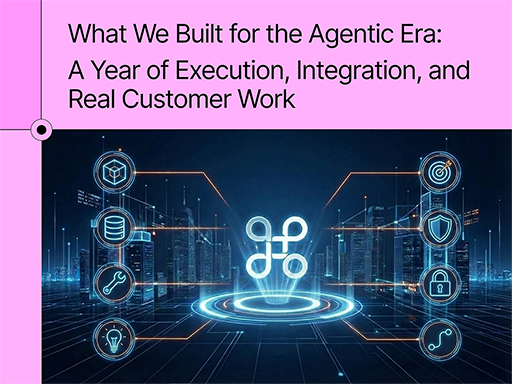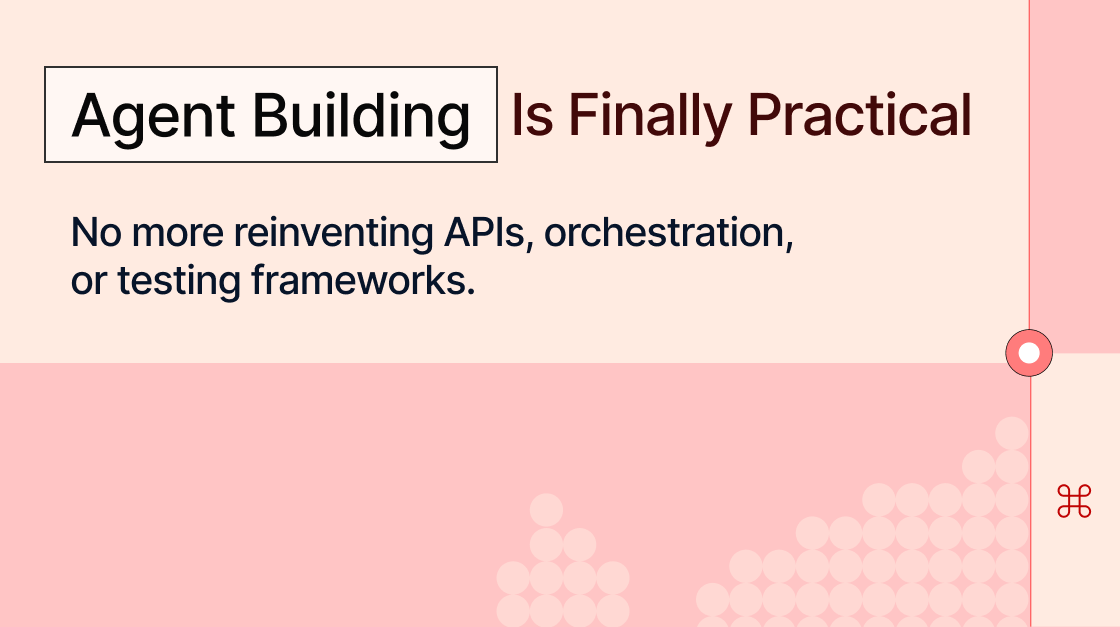Explore why AI agents fail in production, the role of observability in fixing it, and how to build reliable, trust-driven agentic experiences.



The Reliability Gap
AI agents are finally crossing the threshold from demo to deployment. But beneath the surface, one problem keeps surfacing again and again: reliability. You ship a promising Copilot Agent experience. It works in testing. Then in production - things go sideways.
Actions silently fail. Costs balloon without explanation. Users lose trust after a single off response. This is what the industry is increasingly calling the reliability gap. At its core, this gap exists because agentic systems (LLMs paired with tool-calling) - are inherently opaque. They don't expose how they reason, why they chose a specific tool, or where the process broke down.
And unlike traditional software, you don’t get clean stack traces or error codes when things go wrong. To build reliable agentic products, we have to do the work of making these black boxes observable. We need systems that surface how the agent made its decisions, where it failed, and what patterns are emerging in the wild. This is what observability is all about.
In this blog, we break down →
- Why AI agents need a fundamentally different approach to observability
- How observability surfaces shift across logs, traces, and metrics in the agent era
- The most common failure modes in agent UX—and how observability helps catch them
- What metrics PMs should track across each stage of the agent lifecycle
- Why observability is hard to build—and the infrastructure gap most teams miss
If you're building or shipping an agentic product, this article is for you.
Why AI Agents Need Observability
Observability isn’t a new concept.In traditional software systems, it’s what allowed engineering teams to track uptime, monitor API latency, catch server errors, and debug failed requests in production. These monitoring systems worked well for deterministic code paths.
But AI agents don’t operate like traditional software. They don’t follow fixed logic trees. They generate actions based on probabilistic reasoning, dynamic inputs, and contextual interpretation. And when something breaks, it rarely shows up as a neat 500 error. More often, it’s a wrong outcome delivered with total confidence—and no logs to explain why.
Let’s take take tool invocation, for example. A traditional system might log that update_user_role was called.But an AI agent? It might have hallucinated that function name, chosen the wrong parameters, or skipped the step entirely - without raising any red flags.
Here’s an interesting insight Aman Khan, Head of Product at Arize AI, on the Adopted Podcast.
You can watch the full episode of this conversation here.
In agentic systems, small deviations can lead to wildly different outcomes.And without observability, there’s no way to detect those deviations at scale.
That’s why product teams need a new layer of visibility - one that shows what the agent did, how it reasoned, and whether its actions aligned with user intent.
So let’s go deeper.
What Observability Looks Like in Agentic Products
The framework hasn’t changed - logs, traces, and metrics still form the backbone of observability.But in the agent era, what each of these layers captures has evolved dramatically. Here’s how the classic three‑pillar model transforms when you move from deterministic code to probabilistic, tool‑calling agents:
This shift is big. You’re not watching servers; you’re watching thinking machines make and execute plans in real time. You’re now tracking behavior, reasoning, and adaptation in a live product surface that evolves with usage.
Now that we’ve unpacked what observability really means for agentic products - let’s look at why it matters so much.
Common Failure Modes in Agentic UX
Here are the key failure modes showing up in agent UX today - and the observability signals that help prevent them:
Observability is what lets you catch these problems before they pile up in support tickets or churn reports. And for a Product Manager, each one of these failure modes is a potential slack meltdown, support escalation, or roadmap derailment waiting to happen.
So let’s bring some structure to this →
Here’s a breakdown of the types of metrics Product Teams need to track across the agent lifecycle - stage by stage, from pre-launch QA to post-production monitoring.
Observability Across the Agent Lifecycle
Building observability into your agent system isn't a one-shot effort. It's a continuous feedback loop across four key phases. At each stage, the objective shifts - and so do the metrics that matter. Note, all metrics mentioned need to be layered one stage after the other.
🧪 Pre-Production (QA & Testing)
This is where it starts. You're testing the agent in a controlled environment, validating whether it performs the expected actions for known intents.
Primary Objective: Ensure the agent interprets, plans, and executes correctly before it ever sees a real user.
Key Metrics:
- Intent coverage (breadth of tested user intents)
- Tool usage correctness (is the right tool called per intent?)
- Prompt format variability and robustness
- Hallucination rate during test runs
🛠️ Staging & Internal QA
Now you’re running flows with internal testers or beta users. Things are semi-real, but still low-risk.
Primary Objective: Identify early cracks in reasoning, routing, or fallback under diverse but safe conditions.
Key Metrics:
- Action success/failure ratios by persona or flow
- Prompt-to-response alignment logs
- Tool trigger accuracy (did it fire at the right time?)
- Entity resolution accuracy in varied contexts
🚀 Live (Production)
Welcome to the wild. The agent is in users’ hands, and observability becomes your operational safety net.
Primary Objective: Monitor for failure patterns, runaway cost, UX degradation, or performance cliffs.
Key Metrics:
- Completion rate per task type
- Token usage and cost per interaction
- Step-by-step latency (reasoning + tool execution)
- API/tool-specific failure rates
- User-level friction signals (undo, rephrase, fallback frequency)
📉 Post-Production (Monitoring & Drift Detection)
Even when the system is stable, time introduces drift. User behavior evolves. Prompts degrade. Embeddings shift.
Primary Objective: Detect regressions and behavioral drift over time to keep trust and performance high.
Key Metrics:
- Change in action performance over time
- Embedding similarity drift across months
- Retry or fallback loops increasing in frequency
- Drop-off patterns post-agent interaction
- Trust signals trending down (thumbs down, edited outputs)
Beyond these technical and operational metrics, it's worth calling out a broader perspective on trust that’s been gaining traction.
The LangChain team recently introduced a useful framing called CAIR - short for Confidence in AI Results. It reframes AI adoption through a simple but powerful lens: not just what the AI does, but how much users trust it.
.png)
CAIR captures the ratio of value to perceived risk and recovery cost. And observability directly influences all three:
- It helps demonstrate value (by showing impact)
- It reduces risk (by catching silent failures early)
- And it lowers the effort to recover (by surfacing exactly what went wrong)
It’s a great read if you’re thinking about agent UX and adoption—not just infrastructure.
The Hidden Infrastructure Cost of Observability
By now, it’s obvious just how critical observability is and how deep the rabbit hole goes.
Each failure mode you prevent, each metric you track, each stage you monitor - it all adds up to a complex, evolving system that most teams are not equipped to build or maintain.
Now, there’s a lot of excitement around launching agents - and rightly so. But while teams focus on crafting their agent’s core logic and user experience, few are prepared for the underlying AI infrastructure required to support it at scale.
We at Adopt AI, believe teams should absolutely build agents that solve meaningful problems for their users. That’s the work that moves the needle.
But the scaffolding around that agent experience—observability, fallback logic, behavioral drift detection, cost and latency tracking—shouldn't become a distraction.
At Adopt, we recognized this early.
That’s why we built the plug and play Agent Builder Platform with deep observability baked in from day one.
So you can focus on building great agents, while we help you close the reliability gap.
There are two primary observability surfaces in the Adopt platform: the Dashboard and the Logs.
Adopt AI's Observability Dashboard & Action Logs
.png)
The Dashboard is your control center for understanding how well your agent is performing - both during internal setup and in the hands of real users. Below is a list of the key metrics you can view.
Action Logs
.png)
The Action Logs are where Adopt truly shines. Every interaction — whether successful or broken — is recorded in full context.
For each user interaction, you can see:
- What the user asked for
- How the agent interpreted the request
- What steps were executed in response
- Which tools were used, and what they returned
- Whether the outcome was successful
You can filter logs by:
- Action type (Assist, Navigate, API)
- Status (success/failure)
- Specific users and accounts
- Product surfaces/topics
This makes debugging fast and intuitive — even for non-technical team members.
You can:
- Spot recurring failures by filtering down to specific actions
- Review exact user-agent dialogues
- Identify root causes — from prompt errors to tool timeouts
- Fix the logic and republish confidently
Final Word: If You Can’t See It, You Can’t Ship It
Observability bridges innovation and reliability, transforming your AI agent from a promising demo into a trusted production asset.
Adopt AI provides complete visibility, ensuring your AI agent transitions smoothly from a risky experiment into a proven, robust product feature.
Browse Similar Articles
Accelerate Your Agent Roadmap
Adopt gives you the complete infrastructure layer to build, test, deploy and monitor your app’s agents — all in one platform.



.png)
.png)
.png)


.png)
.png)
.png)

.svg)
.svg)





.svg)

.svg)
